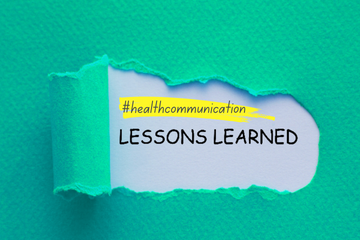You’re reading Lessons Learned, which distills practical takeaways from standout campaigns and peer-reviewed research in health and science communication. Want more Lessons Learned? Subscribe to our Call to Action newsletter.
Communities that experience ongoing and historical injustices from the United States health system may be more likely to trust grassroots campaigns as a source for health information compared to campaigns from national and state public health systems. Grassroots campaigns on social media can be effective, but only if the messages are shared widely. A recent study published in Health Communication (DOI: doi.org/10.1080/10410236.2023.2281075) investigated the impact of different message frames on how much shareability potential pro-vaccine messages had among 701 young, Black Twitter users.
What they learned: Personalized messages from ordinary people, that is, those who are neither celebrities nor health experts, on their lived experiences with vaccination were seen as the most shareable. People who scored higher on open-mindedness were more likely to view personalized messages as more shareable, partially because they were more likely to view social media as a reliable source of information. Importantly, messages that used fear—that is, those that presented vaccination as a way to prevent death or other harm—inhibited how shareable people thought they were.
Why it matters: For members of marginalized communities experiencing historical and ongoing injustices, health campaigns that use fear can bring up feelings of institutional distrust. New methods, including grassroots social media campaigns that use personalized messages from community members, can get people to engage more with new health information.
➡️ Idea worth stealing: Partner with the community you are trying to reach to create messages that tap into people’s lived experiences with the action you are trying to promote.
What to watch: How public health institutions learn to partner with community organizations and activists to effectively spread health information through grassroots social media campaigns.




